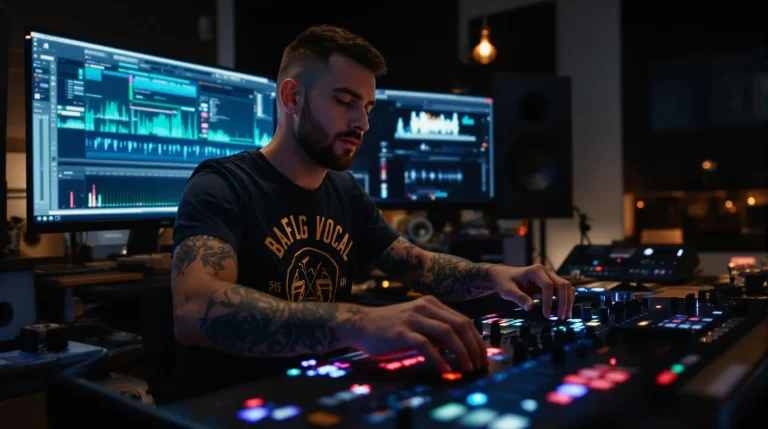The Best Automated Mixing Software: Revolutionize Your Audio Production
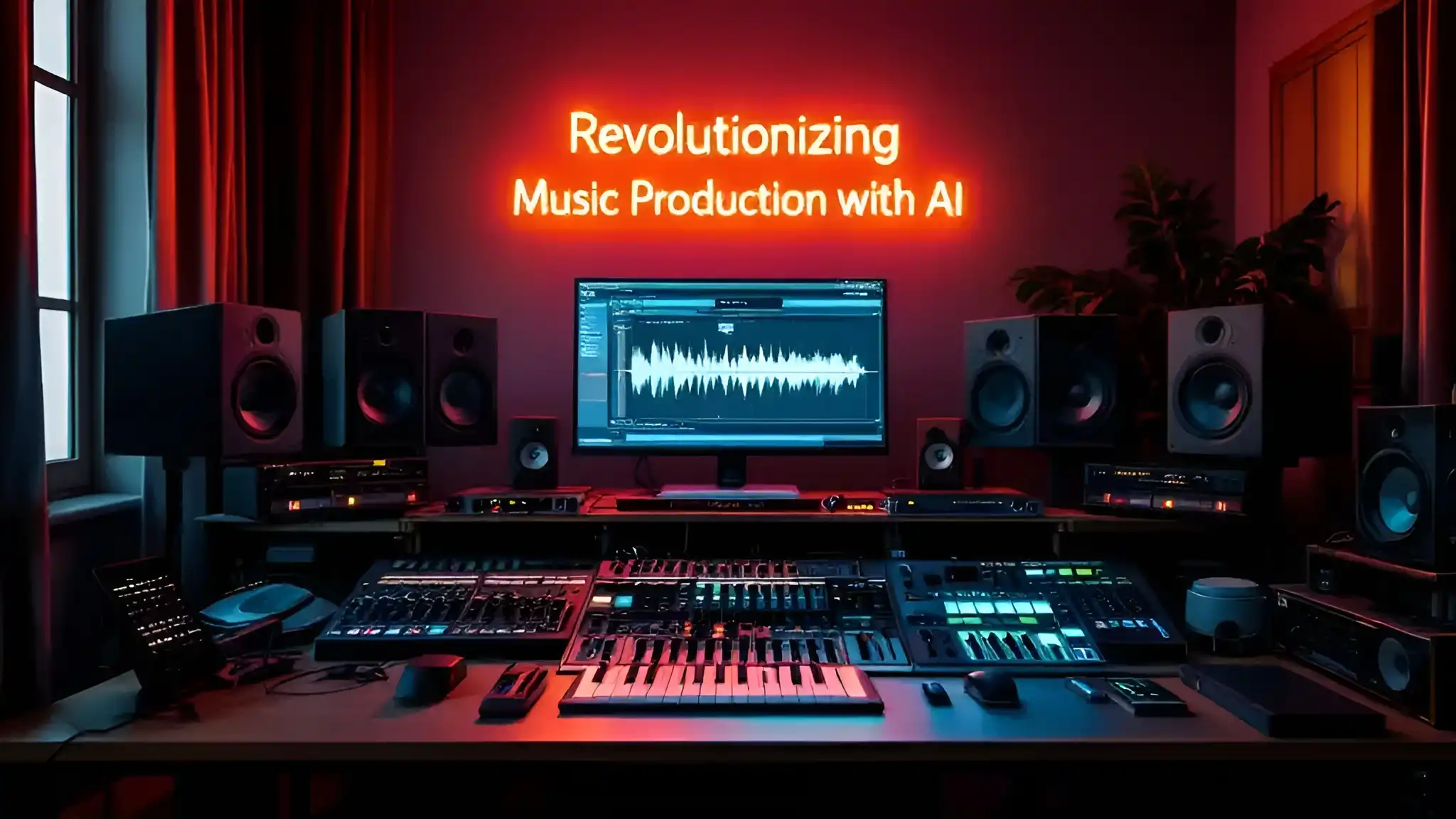
Automated Mixing Software is changing the game in the fast-evolving world of music production. AI tools have totally revolutionized how we mix and create music. By integrating artificial intelligence into mixing software, both newbies and pros can automate complex tasks, streamline workflows, and nail high-quality results. In this article, we’ll dive into the top 10 AI tools that are shaking up the mixing process today.
Scott Evans DJ is supported by its readers. If you purchase through any link on the site, we may earn a commission. Learn more
Understanding AI in Music Mixing
AI in music mixing refers to the innovative use of artificial intelligence algorithms that automate and enhance the mixing process. Modern Automated Mixing Software analyzes audio tracks in real-time, applying various processing techniques such as EQ, compression, and effects. The goal is to achieve a professional sound with minimal manual intervention, allowing users to mix music seamlessly. By adapting to different genres and styles, Automated Mixing Software has become increasingly sophisticated, offering versatile solutions for various music production needs.
What is AI in Music Mixing?
AI in music mixing involves using advanced algorithms designed to enhance the overall mixing process. These AI systems can automatically mix songs by analyzing audio characteristics and applying tailored processing techniques, similar to how a DJ app functions. By learning from user preferences and previous mixes, AI tools improve over time, providing valuable suggestions that help producers achieve high-quality results with less effort.
The Role of Automix in Modern Music Production
Automix software plays a crucial role in modern music production, particularly for DJs and producers who seek efficiency in their workflow. These tools automate time-consuming tasks like beat matching and key detection, enabling users to create mixes quickly. This capability is especially beneficial during live performances, where seamless transitions between tracks are essential, much like Spotify playlists. By integrating automix AI, DJs can focus on their performance rather than the technicalities of mixing, enhancing the overall listening experience.
Benefits of Using AI Tools for Mixing
The benefits of utilizing Automated Mixing Software and other AI tools for mixing are manifold, including increased efficiency and improved accuracy. These AI-powered solutions, like today’s advanced Automated Mixing Software, save producers countless hours by automating repetitive tasks, allowing them to concentrate on the creative aspects of music production. Additionally, AI algorithms provide real-time feedback, helping users refine their mixing skills while reducing errors. Overall, AI tools empower music lovers and producers to create professional-quality mixes with less effort and time.
Top AI Tools for Mixing
1. Sonible: Intelligent Mixing Assistant
Sonible’s Intelligent Mixing Assistant is a remarkable tool for mixing music, utilizing advanced AI technology to analyze audio tracks thoroughly. It provides real-time suggestions for EQ and dynamics processing, making it easier for producers to achieve professional-quality mixes. The software is designed to enhance clarity and balance, allowing users to focus on the creative aspects of production. With its user-friendly interface, both beginners and seasoned professionals can navigate the mixing process effectively, adapting to various music genres seamlessly, even when using a type of computer that isn’t top-of-the-line. Sonible empowers music lovers to mix tracks effortlessly by offering intelligent insights that elevate their workflow.
2. iZotope Neutron: Advanced Mixing Suite
iZotope Neutron stands out as an advanced mixing suite that incorporates cutting-edge AI tools to assist producers in achieving top-notch sound quality in their DAW. Its Mix Assistant feature automatically analyzes audio tracks, applying essential processing techniques such as EQ, compression, and stereo imaging. The modular design allows users to customize their mixing workflow, adding or removing modules based on their needs. Neutron also includes visual analysis tools that help identify mix balance and frequency masking issues, making it easier for users to refine their mixes. This powerful solution caters to both novices and expert producers, streamlining the mixing process effectively.
3. iZotope Ozone: Mastering with AI Precision
iZotope Ozone serves as a comprehensive mastering solution, leveraging AI technology to enhance the entire mastering process. The Master Assistant feature intelligently analyzes audio and offers tailored recommendations for EQ, dynamics, and other essential mastering settings. With its intuitive interface, users can visualize their audio in real-time, facilitating a better understanding of their adjustments. Ozone encompasses a variety of modules for mastering tasks, ensuring a polished final product. Recognized widely in the music production industry, Ozone is essential for producers aiming to deliver professional-quality masters swiftly and efficiently, making it a vital tool in their arsenal.
Key Features of Automated Mixing Software
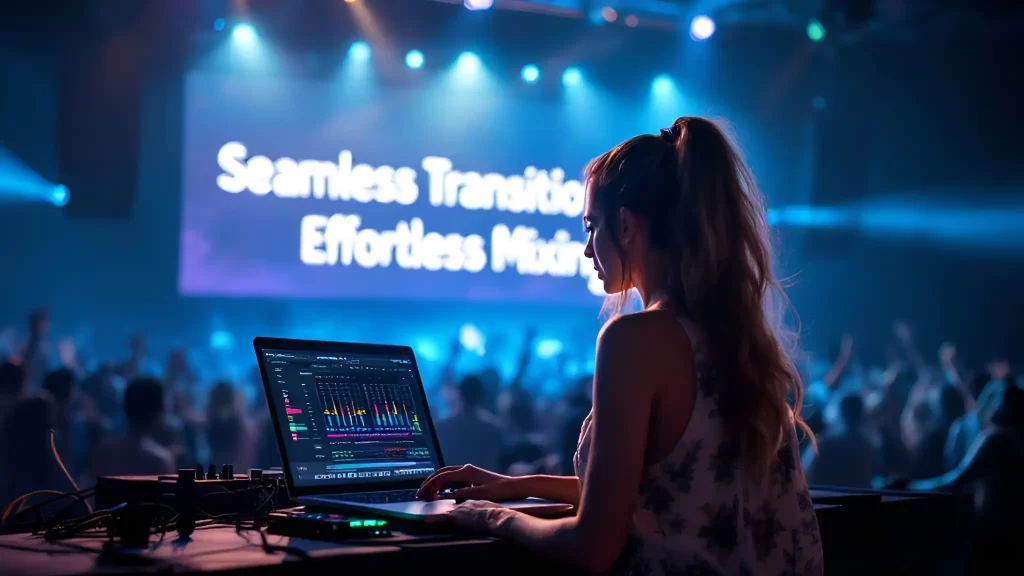
Automating the Mixing Process
Automated Mixing Software revolutionizes the mixing process by employing advanced algorithms that analyze the tempo and key of tracks, ensuring seamless transitions. This automation allows producers to focus on their creative endeavors while the software handles the complexities of harmonic compatibility between songs. Today’s Automated Mixing Software assists DJs in live performances, managing track transitions, and enhancing audience engagement. With features like automatic beat matching and key detection, the guesswork traditionally involved in creating cohesive sets is significantly reduced. As a result, automating these processes saves valuable time and elevates the mix’s overall quality.
Integration with DJ Tools and Software
Many automix software solutions are designed to integrate effortlessly with popular DJ tools and software, enhancing their overall functionality. This integration allows DJs to utilize automix features within their existing workflows, making it more convenient to create dynamic and engaging sets. For instance, DJ.Studio offers advanced automix capabilities that analyze an extensive library of tracks, suggesting optimal transitions based on harmonic content and energy levels. Such compatibility with other software simplifies the mixing process, enabling DJs to craft captivating sets with minimal effort. This versatility makes automix tools indispensable for modern DJs, enhancing their mixing capabilities.
Real-time Analysis and Adjustments
Real-time analysis and adjustments are pivotal features of modern Automated Mixing Software, continuously assessing audio tracks during playback. This immediate feedback allows for swift corrections and enhancements, ensuring that the mixes remain balanced and coherent throughout performances. The latest Automated Mixing Software handles automated adjustments that may include dynamic EQ changes, volume leveling, and effect applications tailored to the specific characteristics of the tracks being mixed. This level of responsiveness is essential for maintaining energy and engagement in live settings, allowing producers and DJs to deliver exceptional performances. With real-time capabilities, automix software significantly enhances the overall mixing process and user experience.
Comparing Mixing Software Options
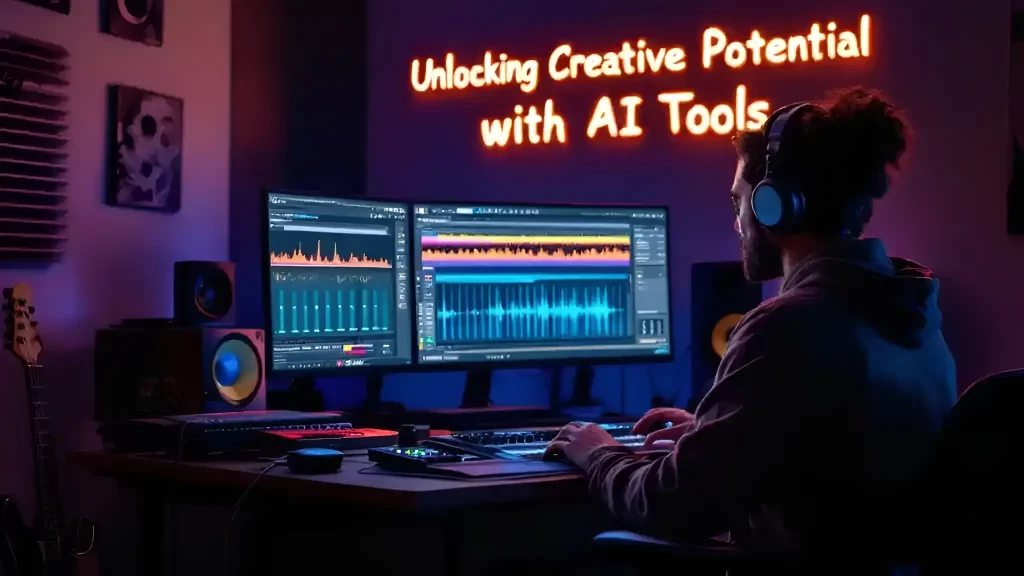
Features of Popular Mixing Software
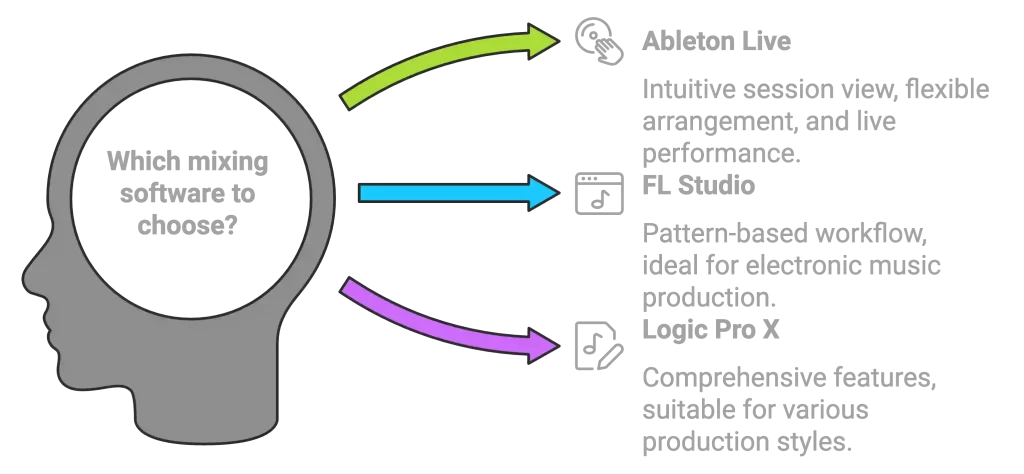
When comparing mixing software options, it is essential to explore various features such as user interface, automation capabilities, and integration with other tools. Popular software like Ableton Live, FL Studio, and Logic Pro X provide a range of features tailored to different production styles. For instance, Ableton Live is known for its intuitive session view, allowing users to flexibly arrange and perform live. Conversely, FL Studio excels with a pattern-based workflow, ideal for electronic music production. Each software has unique strengths, making it crucial for users to select one that aligns with their specific needs and preferences, ensuring an optimal mixing process.
How AI Tools Enhance Traditional Mixing Techniques
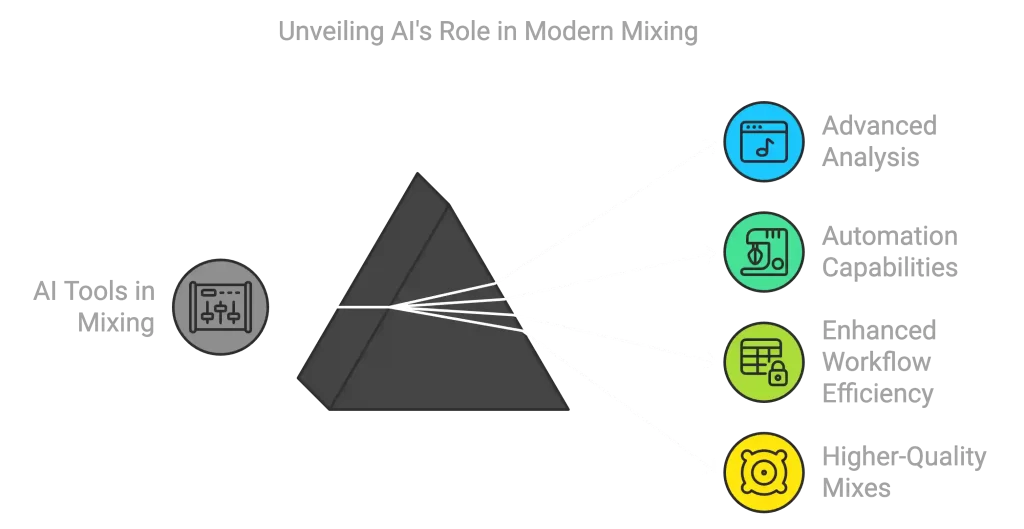
AI tools and modern Automated Mixing Software significantly enhance traditional mixing techniques by offering advanced analysis and automation capabilities that streamline the mixing process. These tools can analyze audio frequency content, dynamics, and spatial characteristics, providing insights that may not be immediately perceptible to the human ear. By automating time-consuming tasks, such as EQ adjustments and dynamic processing, Automated Mixing Software allows producers to concentrate on creative decisions rather than technical details, especially in a DAW environment. This combination of traditional mixing skills with cutting-edge AI technology results in a more efficient workflow and can lead to higher-quality mixes, showcasing the potential of AI in modern music production.
User Experience and Interface Considerations
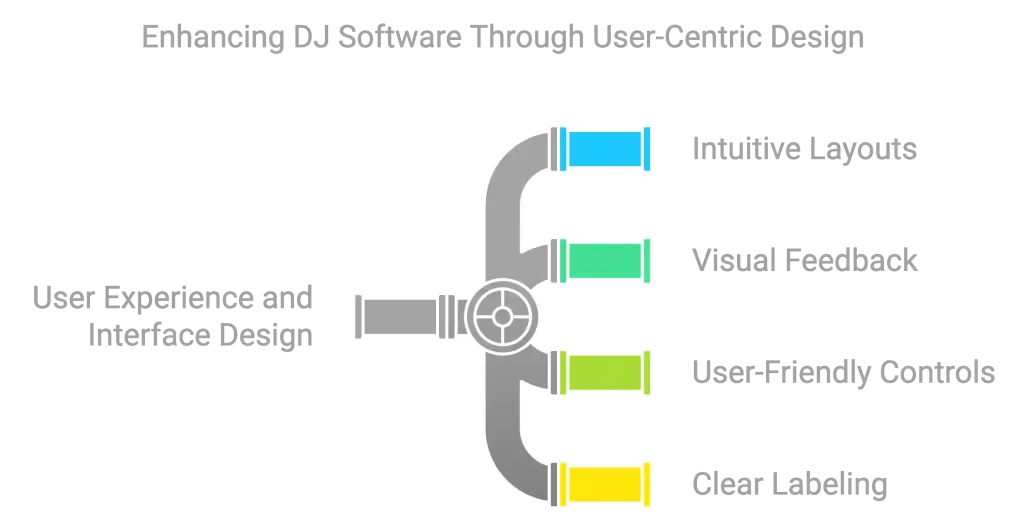
User experience and interface design are critical factors when evaluating Automated Mixing Software, especially in a DJ app context. A well-designed interface can significantly enhance productivity by simplifying navigation and making essential features easily accessible. Many modern mixing tools, including the latest Automated Mixing Software solutions, prioritize intuitive layouts and visual feedback, enabling users to gauge the impact of their adjustments in real-time. Furthermore, user-friendly controls and clear labeling help reduce the learning curve for new users. By focusing on user experience, software developers can create tools that not only perform efficiently but are also enjoyable to use, ultimately improving the overall music mixing process.
Tips for Effective Music Mixing with AI
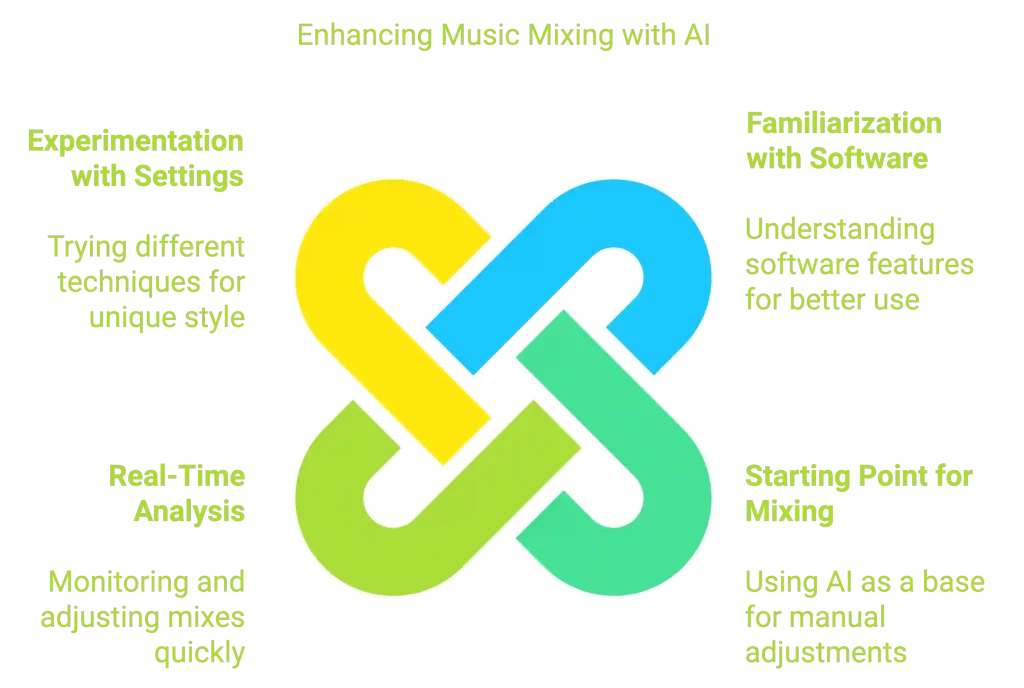
To maximize the benefits of Automated Mixing Software and other AI tools in music mixing, consider the following tips: first, familiarize yourself with the features and capabilities of your chosen software to fully utilize its potential. Second, use AI tools as a starting point for your mixes, allowing for manual adjustments to achieve a personalized sound. Third, leverage real-time analysis features to monitor your mix and make adjustments quickly. Lastly, continuously experiment with different settings and techniques in your Automated Mixing Software to discover what works best for your unique style and genre, ensuring you take full advantage of the available AI-powered solutions for mixing.
Community Insights on Automix Software
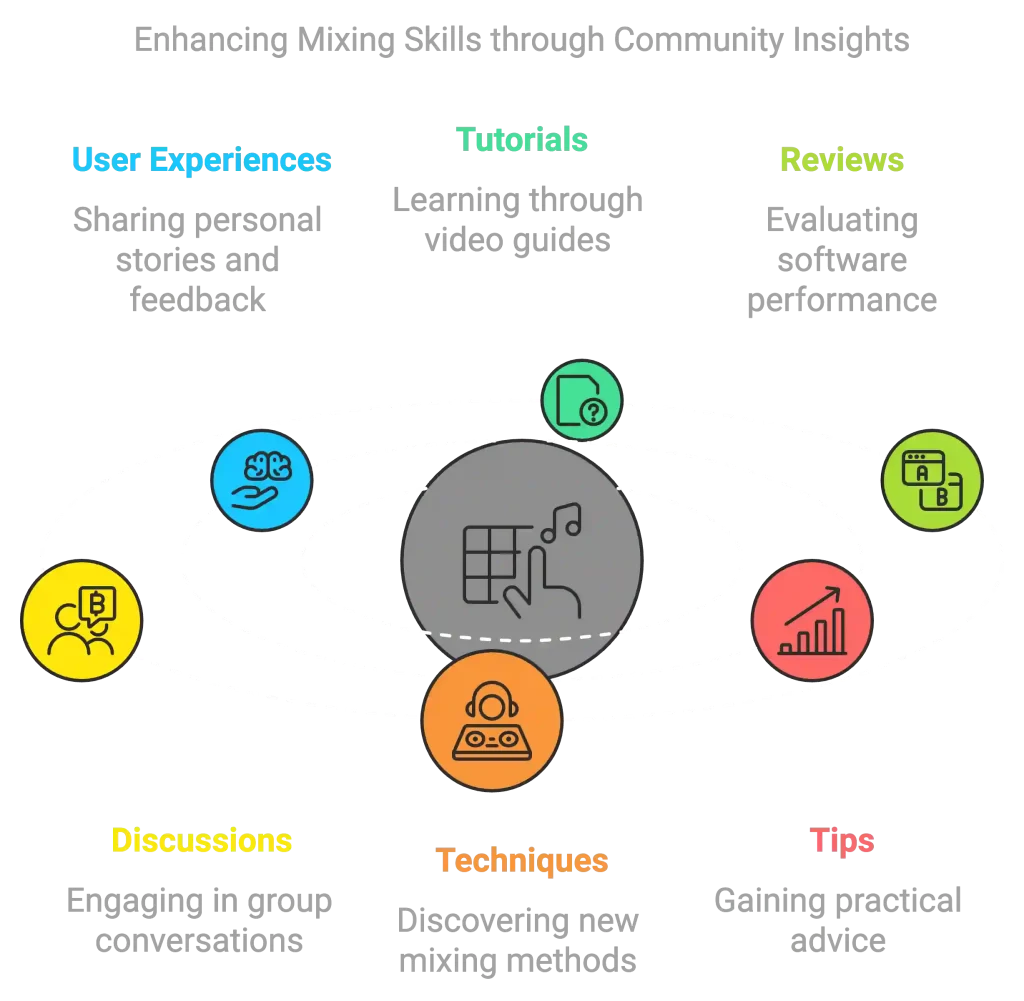
Community insights on Automated Mixing Software provide valuable perspectives on user experiences and best practices. Many DJs and producers share their thoughts on platforms like YouTube, where they post tutorials and reviews of various automix tools. Additionally, social media groups and forums often feature discussions about the strengths and weaknesses of different software options, with experienced users sharing their favorite Automated Mixing Software and helping newcomers make informed decisions. Engaging with these communities can lead to discovering new techniques and tips that enhance your mixing skills and overall production quality, ultimately contributing to more seamless transitions between songs in your mixes.
Conclusion
In a nutshell, the world of DJing and music production is buzzing with innovation and creativity. Whether you’re a seasoned professional DJ or just getting started, cool Automated Mixing Software like DJay Pro and Virtual DJ are designed to make your life easier than ever. These tools give you access to features like harmonic mixing, automixing, and even online AI mixing to create seamless mixes. The latest Automated Mixing Software lets you easily remix tracks in a DAW, adjust EQ bands, and add a magic touch with vocal enhancement for that incredibly authentic sound.
Tools like Rekordbox and Traktor, along with cutting-edge Automated Mixing Software, allow you to manually arrange your playlists or let the software mix tracks based on your preferences. Whether you’re playing a club in Bristol or just creating a playlist on Apple Music, these platforms offer the flexibility to play next tracks with ease. With presets and the ability to automatically adjust reverbs, your creative vision can truly come to life. From WAV files to MP3s, modern Automated Mixing Software and powerful DAWs and mobile apps provide everything you need for your DJing journey. So, here’s to making music that sounds as good as it feels, whether it’s in an MP3 format or a live performance!
FAQs about automated mixing software and its capabilities in a DAW environment.

DJ Scott Evans
Hey there! I’m Scott Evans, DJ and music tech enthusiast who’s gone all-in on AI music tools. After years behind the decks and geeking out over gear, I discovered how AI can unlock incredible creative possibilities for musicians like us. On this site, I break down complex AI music tech into easy-to-follow tutorials and honest reviews. Think of me as your friendly guide through the AI music revolution – no technical jargon, just practical tips to elevate your sound. Let’s explore what these digital tools can do for your creativity!

